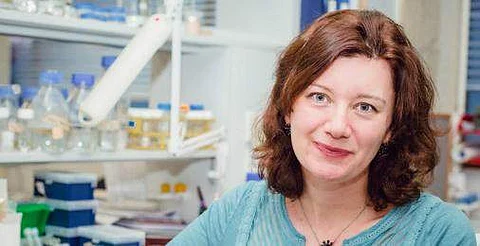

When you think of Archeology and Genetics as two subjects, you realise that the two have a lot in common, but then, you can't deny the fact that Archeology is a humanities subject and Genetics is science. So, it can't be easy to be an expert at both, right? Well, let's ask Dr Turi King.
Dr King, who started out with a bachelor's degree in Archeology and Anthropology, became very interested in Genetics too. Subsequently, she went on to win a scholarship to do her master's in Genetics from the University of Leicester. "It is quite rare for someone to be an expert in both Archeology and Genetics. It’s interesting for me because I can understand what the archaeologists are saying and what the geneticists are saying, even if they don't understand each other," said Dr King with a smile. But being an expert in these subjects isn't what she's known for. She’s most noted for cracking one of the biggest forensic DNA cases in history, during the exhumation and reburial of King Richard the Third.
Because of her unique expertise, the Richard III Society approached Dr King to be a part of their team that was all set to trace the body of Richard III. For the uninitiated, Richard III was a king whose history has been distorted by many, including Shakespeare, who painted him as a villainous character. There has been a lot of mystery surrounding his death and where exactly he was buried. Known to have died in 1485, the discovery of the king's remains is one of greatest discoveries in history as there have been very few cases where people have been able to identify a historical figure thousands of years after their death with the help of DNA analysis.
The team finally found his body under a parking lot in the city of Leicester, where the Greyfriars Church once stood. "Thankfully, we managed to find two bones of his skeleton where we first predicted his location. From just those tiny pieces, we were able to discover so much about him, facts that were previously mistaken. There are different portraits of him, but they all depict him differently, but now, we know which ones are true," said Dr King, "For example, in the portraits, he is shown to have dark hair and dark eyes, but DNA tests have now revealed that he was actually light-haired and blue-eyed.”
Just being a part of such an amazing project must have been overwhelming, but what did she love the most about this mission? "Oh, it has to be the time I finally confirmed that the DNA was, in fact, Richard's. I did a little dance around the lab, I was just overjoyed," she recalled.
Dr King is now leading 'The King's DNA: Whole Genome Sequencing of Richard the Third' project, which is funded by the Wellcome Trust, the Leverhulme Trust and famed British geneticist, Professor Sir Alec Jeffreys. It was this project that she was recently discussing with students across India as part of the GREAT Britain campaign, facilitated by the British Council. "We are now trying to completely figure out the genome sequence of Richard the Third, to find out every little detail about him," she said.
Besides this, Dr King is also involved in testing medieval skeletons for Paget’s disease, which affects about 800,000 people in the UK. "We've discovered the disease in almost all the bones we've found in the area, so now, we're trying to see if all the bones belong to one family and if that's how the disease spread, or if people with the disease where actually banished to one area," she explained.
